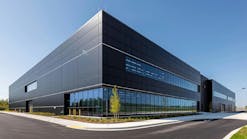
There is a growing trend in security that many security professionals are not aware of. It can help virtually any type of organization or individual lower costs, reduce risk and improve quality of life. It requires minimal investment and can be leveraged in almost every type of building, home, campus or community. Law enforcement openly embraces it, corporate security departments become certified in it, architects practice it around the world; however, I have rarely, if ever, heard security companies – who broadly advertise their expertise in making people and properties safer – talk about it, or even know what it means.
I know what you are thinking – this sounds amazing, but what exactly am I referring to?
It is called CPTED. Pronounced SEP-ted, it stands for Crime Prevention Through Environmental Design. The mission of CPTED is to improve safety and security by subtly incorporating design features into the ‘built environment’ – buildings, landscaping, roads, parking lots, communities, etc. – and reducing reliance on technology by employing strategies such as natural surveillance and natural access control.
This my sound like a threat to your business (and a poor choice of topics for this column), but it is not; in fact, it is an opportunity to enhance both your business and the role technology plays with your customers. Let me explain.
Prevention vs. Detection
Security’s role is to mitigate risk by either reducing the probability that something bad will occur – typically criminal activity – or the impact that activity will have on an individual or an organization. Our industry has for years viewed this through a narrow lens, claiming that technology alone can solve all end-users’ problems. While technology absolutely plays a critical role, it is only a piece of the complex puzzle that organizations must construct to safeguard their people, property and assets.
If asked their preference, virtually every end-user would rather deploy solutions that prevent criminal activity (reduce the probability) than respond to criminal activity (reduce the impact). We as an industry have done a good job espousing our technologies’ ability to prevent crime, but the hard reality is that most security technology does not actually prevent crime, it simply displaces it. This may be acceptable for small buildings with one door in the front and back, but it is not particularly effective for larger buildings, campuses and cities.
End-users know this intuitively, and it often frustrates them. They know they must invest in technology to help catch the bad guy, but covering their entire facility or campus is often financially prohibitive and can lead to occupant and visitor dissatisfaction.
This frustration is projected onto their security vendor or integrator, who they accuse of simply trying to sell them more technology instead of helping them solve the root cause of their problems. Usually, they are right. They do not view you as a security expert; instead, they view you as a salesperson (even if you aren’t), and most people do not like being sold to.
This starts a vicious cycle where the customer’s trust continuously erodes, leading them to reduce technology spending and seek other solutions. This is the threat to your business.
Expand Your Expertise
What can you do about it? Security companies must start developing comprehensive security expertise to complement their technological capabilities, much like we successfully improved IT skills over the past few decades. Security consultants recognized this a long time ago and have done an excellent job filling the void left by technology solutions providers; however, hiring a security consultant is not always feasible. This is where CPTED offers you an opportunity.
“Research into criminal activity has shown that the decision to offend or not to offend is more influenced by cues to the perceived risk of being caught than by cues to reward or ease of entry,” says Dan Keller, Executive Director of the American Crime Prevention Institute. “The primary motivation of ‘rational’ offenders is the accomplishment of the criminal offense and successful escape.”
In other words, criminal behavior can be prevented by changing the criminal’s perception of being caught. CPTED is based on the belief that this perception can be influenced by design features of the surrounding environment.
“The proper design and effective use of the physical environment can lead to a reduction in the fear and incidence of crime, and an improvement in the quality of life,” says Tim Crowe, a renowned criminologist who is considered one of the forefathers of modern CPTED.
Security providers should serve as trusted partners skilled in techniques like CPTED in addition to technology, improving customer satisfaction and retention and ending that vicious cycle. Because CPTED is often incorporated during the design stage of new construction or major renovations, these skills improve the likelihood of early involvement and your competitive position in a project.
Understand the Concept
CPTED strategies enhance the perceived risk of detection and apprehension, and are organized into five primary categories: Natural surveillance; natural access control; territoriality; maintenance; and activity support.
These concepts are not overly complex; in fact, most would be considered logical, readily apparent, and in many cases, simple to implement. Importantly, integration of CPTED into a comprehensive security program does not replace the need for technology, but it enhances the effectiveness of those solutions.
Natural surveillance strategies emphasize concepts such as clear sight lines, eliminating places of concealment and ensuring adequate lighting conditions – all of which support effective video surveillance and analytics. Natural access control encourages people toward a limited number of entry and exit points, allowing electronic access control solutions to be focused on areas where they are most effective.
There are multiple organizations that provide training and even certifications in the practice of CPTED – I encourage you to invest a minimal amount of time and resource to add these crucial skills to your arsenal. It will not only benefit your customers but will also improve your business.
Brandon Reich is CEO of SecureBI (www.securebi.com), a business and strategic advisory firm exclusively serving the physical security and IoT industries. In more than 20 years in the security industry, he has held executive positions at companies including Honeywell, Pelco and Pivot3. Follow him on Twitter at @Brandon_Reich or email him at [email protected].

Brandon Reich | Senior Director of Surveillance Solutions at Pivot3 Inc
Brandon Reich is CEO of SecureBI (www.securebi.com), a business and strategic advisory firm exclusively serving the physical security and IoT industries. In more than 20 years in the security industry, he has held executive positions at companies including Honeywell, Pelco and Pivot3. Follow him on Twitter at @Brandon_Reich or email him at [email protected].

